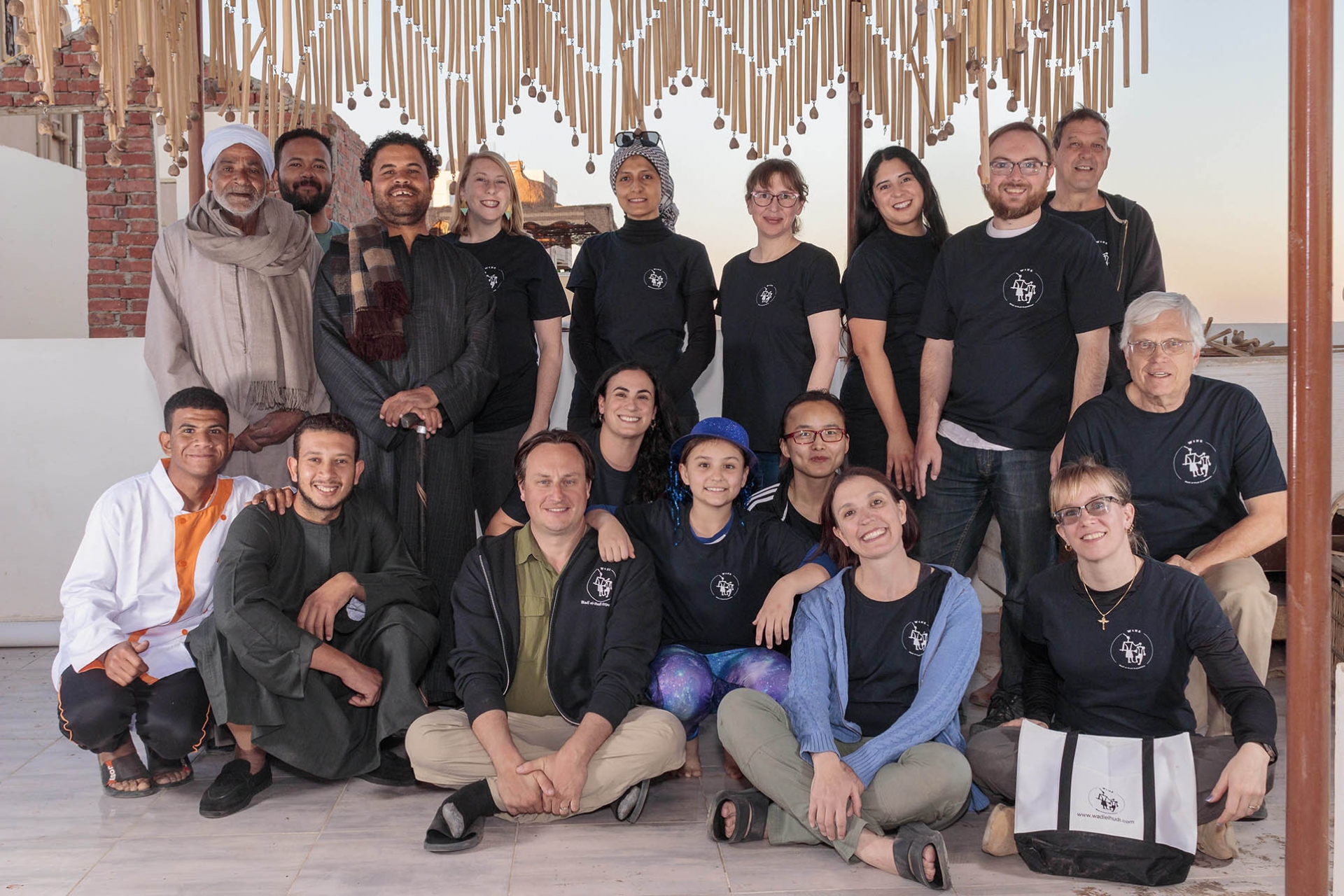Joe Gutierrez | Office of Strategic Communication | (909) 537-3007 | joeg@csusb.edu
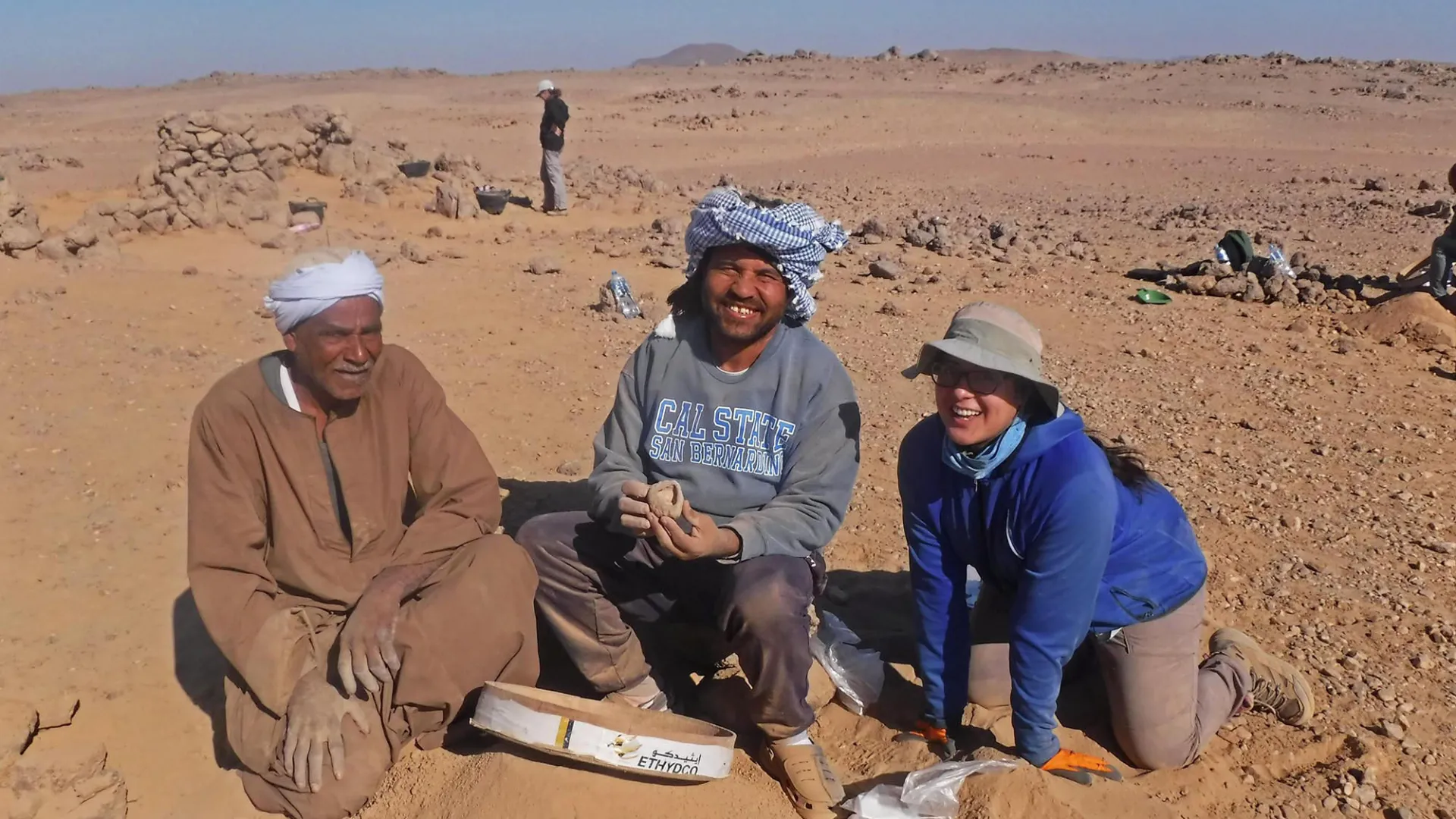
The Wadi el-Hudi Expedition just returned to San Bernardino after their latest archaeological season in Egypt, where they excavated two ancient houses and an ancient Egyptian mining settlement that archaeologists had not yet explored, as well as discovering six new archaeological sites at Wadi el-Hudi.
Now they are looking forward to sharing with the campus community their new discoveries, places visited for the first time, and technological innovation in archaeology.
The Wadi el-Hudi Expedition is directed by Kate Liszka, associate professor of history and the Benson and Pamela Harer Fellow in Egyptology at Cal State San Bernardino. Co-directors of the project are also affiliated with CSUSB: Meredith Brand was CSUSB’s W. Benson Harer Egyptology Scholar in Residence for spring 2022 and Bryan Kraemer is CSUSB’s Egyptologist with the Robert and Frances Fullerton Museum of Art
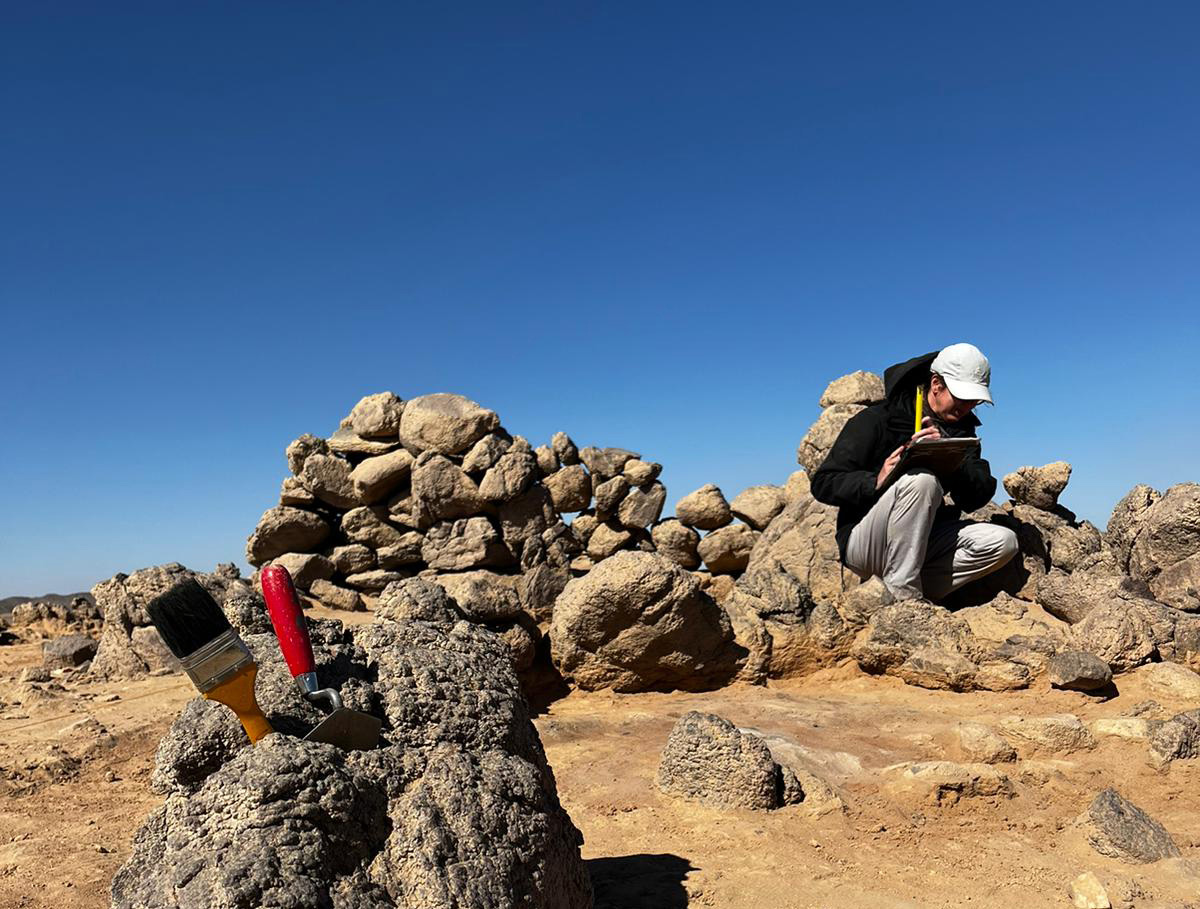
Dozens of CSUSB students have worked with the Wadi el-Hudi Expedition both in Egypt and at CSUSB getting firsthand experience with primary faculty-led research. In 2024, Lizska will teach a unique seminar (Hist 4550), last offered in 2018, just on Wadi el-Hudi in which she will teach students how to write history from primary data.
For this season, the Wadi el-Hudi Expedition was awarded a $50,000 Antiquities Endowment Fund grant from the American Research Center in Egypt and the U.S. Agency for International Development in order to conserve, restore, and record rocks with inscriptions (aka stelae) that they found at the archaeological sites. As part of the project, they created 3D models of every piece of broken inscriptions using photogrammetry and virtually reconstructed them in Blender.
They also physically reconstructed two stelae whose dozens of disparate fragments had been separated from each other for over the last century. These virtually reconstructed stelae will later be incorporated into large scale 3D models of the entire archaeological site that the Wadi el-Hudi team has been creating with the help at CSUSB’s Academic Technologies and Innovation, the Extended REALity for Learning (xREAL) LabX and the Pacific Research Platform (PRP) at CSUSB.
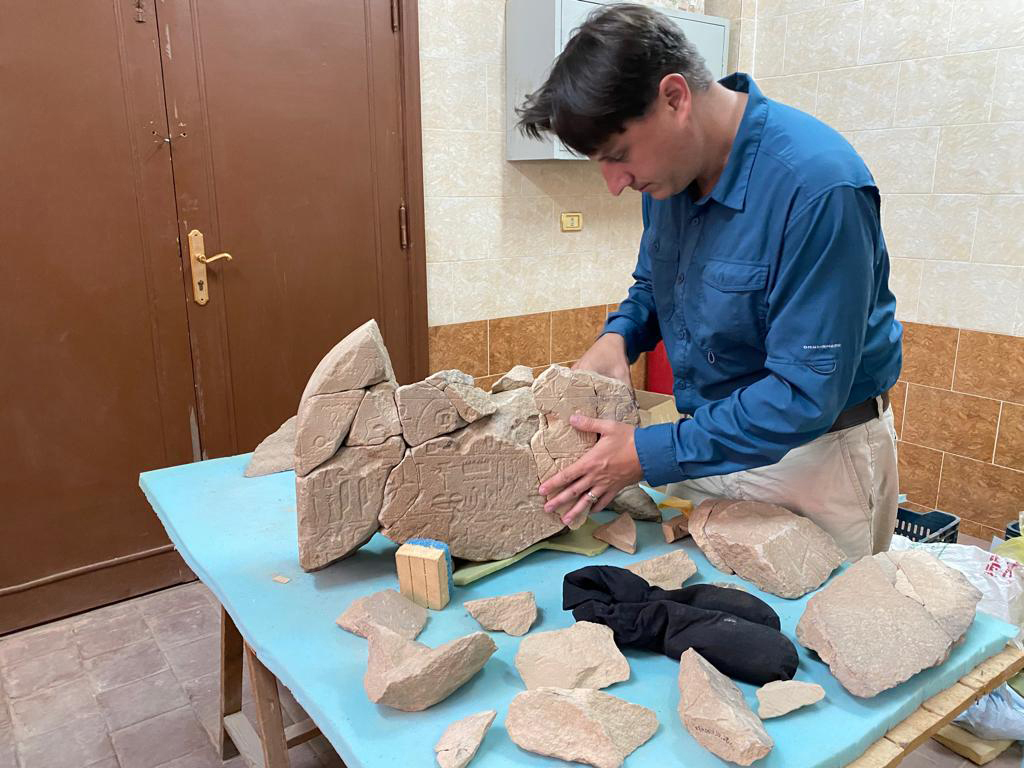
At the archaeological site in the Egyptian Eastern Desert, the Wadi el-Hudi expedition spent several weeks excavating two ancient houses at Site 21. This excavation was important because this is the only Nubian mining camp found in Egypt at places where Egyptians typically mined for amethyst. Just two kilometers away is a large Egyptian mining settlement that the pharaohs sent over 1000 workers to mine amethyst.
But at Site 21, small groups of Nubians were working there seemingly under the noses of the giant Egyptian expeditions. The archaeologists were looking for evidence of Nubian living and mining behaviors that may show multicultural differences to Egyptian living and mining behaviors. How were their tools, their pottery, or their cooking practices different from each other and what does that say about their diverse entanglement with the Egyptian state?
The Wadi el-Hudi Expedition also traveled about 30 miles south on Lake Nasser to an archaeological site that no other archaeologist has been to, Dihmit South. This is an enormous, fortified settlement from 4,000 years ago where Egyptians also mined amethyst. It’s an important parallel to similar fortified settlements at Wadi el-Hudi, but almost twice as large.
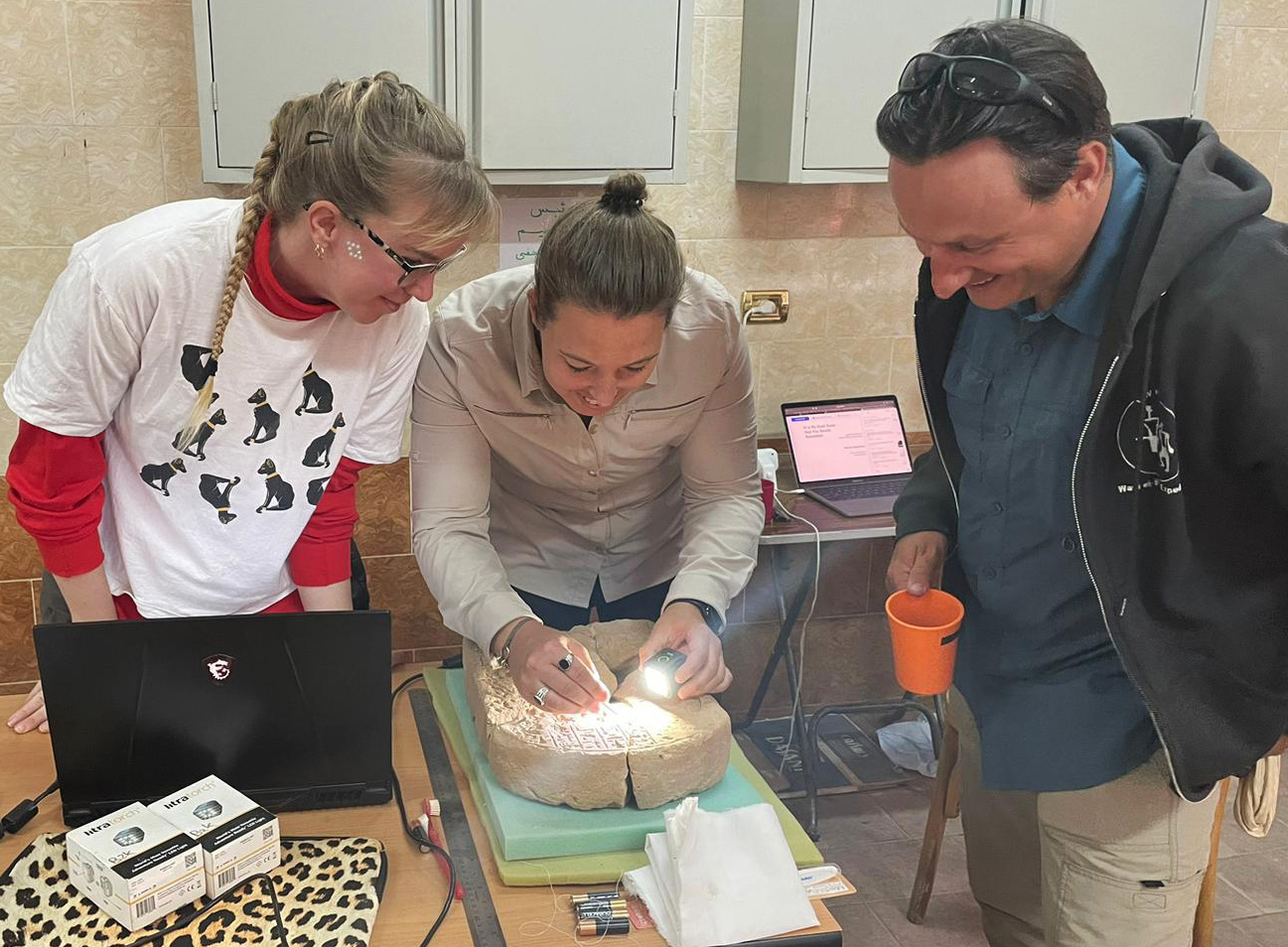
Upon arriving, they found a settlement with walls complete with buttresses and windows that still stand 3 meters tall. Their team also discovered dozens of inscriptions on rocks or other small stela that the ancient people left to commemorate their expeditions. And a massive mine and work area to the south shows a new location were Egyptians mined amethyst that scholars never knew about before.
Over two days, they recorded a massive amount of the archaeology in the settlement and on the surrounding hill tops, and they took nearly 30 thousand photos that are being turned into a 3D map of the site.
The team also discovered six new archaeological sites at Wadi el-Hudi this year; Site 51 turns out to be a pastoral nomadic rock shelter used for 1000s of years by migrating pastoral nomads and their herds. They drew over 50 rock inscriptions of cows, ibexes, and other animals across the cliff face. This site complements the other sites at Wadi el-Hudi because it shows how locals lived near and likely interacted with the large Egyptian mining expeditions.
It also turns out that Wadi el-Hudi is not just significant from 4,000 to 2,000 years ago for Pharaonic mining. This season, Paleolithic specialists joined the team and discovered that Wadi el-Hudi also has large-scale, multi-phased habitation levels dating to the Early and Middle Stone ages, one million years ago to 200,000 years ago!
Discoveries from this season will bring outside recognition to CSUSB and create numerous research projects that CSUSB students can get involved with for years to come.
